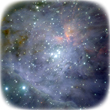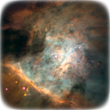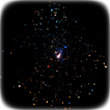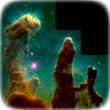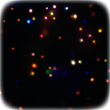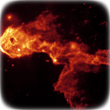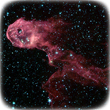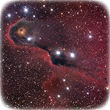The Case of the Massive Forming Star
The Orion Nebula
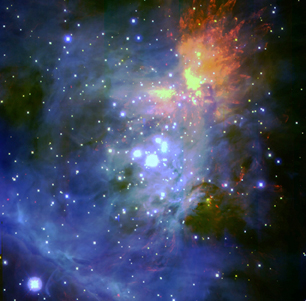
The Orion Nebula seen in infrared light by the Subaru Telescope
Photo: Copyright © National Astronomical Observatory of Japan
The Orion Nebula is being intensively studied by astronomers seeking to test theories of massive star formation. Most importantly, the nebula is closer than other similar regions (1,500 light years away) and can be imaged in greater detail.
The image to the left shows a view of the nebula (blue) and a younger companion star-forming region that lies behind (red), still buried within a dense dark cloud of gas and dust. Four young, very bright massive stars form a mini-constellation known as the "Trapezium," which is near the center of the Orion Nebula. Many of the surrounding stars are siblings on the near side of the cloud. Massive star formation is believed to result in clusters that are a mix of large and small stars. However, it is the enormous visible and ultraviolet radiation emitted by the Trapezium stars that makes the nebula bright enough to see with the naked eye while it heats the surrounding gas. Over time, the nebula will dissipate, leaving behind bare stars.
The companion region behind the Trapezium contains massive stars still in the process of forming and still enshrouded by the dust and gas. The relatively compact region shown in red in the Subaru image—above and to the right of the Trapezium—is called the "Kleinmann-Low" (KL) Nebula, named after the American astronomers Douglas Kleinmann and Frank Low, who first described in 1967 a new region separate from the main nebula and visible only in infrared light.
